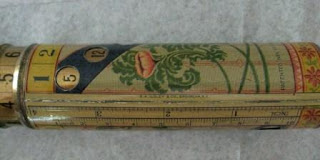Late 19th Century Harmonica, with Box
A large F scale harmonica with 24 holes in excellent condition! The wooden core is flanked by metal on both sides, which is attached by screws and nuts on each end. There are fingerprints on the metal which may be from any number of Peter family musicians, but are more likely from an earlier collection exploration by the foundation.

Materials: Metal, brass, wood, textiles, paper;
From: Ands Koch; Germany
.JPG)
19th Century Scarificator
Brass 12-blade octagonal scarificator used for bloodletting practices. The device has a large lever on top to cock the steel blades and the side knob releases the spring-loaded rotary lancets to make shallow cuts on the patient. The top knob adjusts the cutting depth of the blades. The blades are grouped into two pairs of 6 blades, which alternate from left to right and overlap in the center. The scarificator measures approximately 3.5 cm high, excluding the lever and height adjustment knob.
The leather-covered wooden box is lined with burgundy velvet. A brass hook on the main portion of the box swings to catch in an eye attached to the top lid.
The scarificator is stained with possible smudged fingerprints. The lances are caked with an unknown substance and are beginning to show signs of corrosion.

Materials: Brass, steel, wood, leather, velvet
From: Unknown m anufacturer
anufacturer





